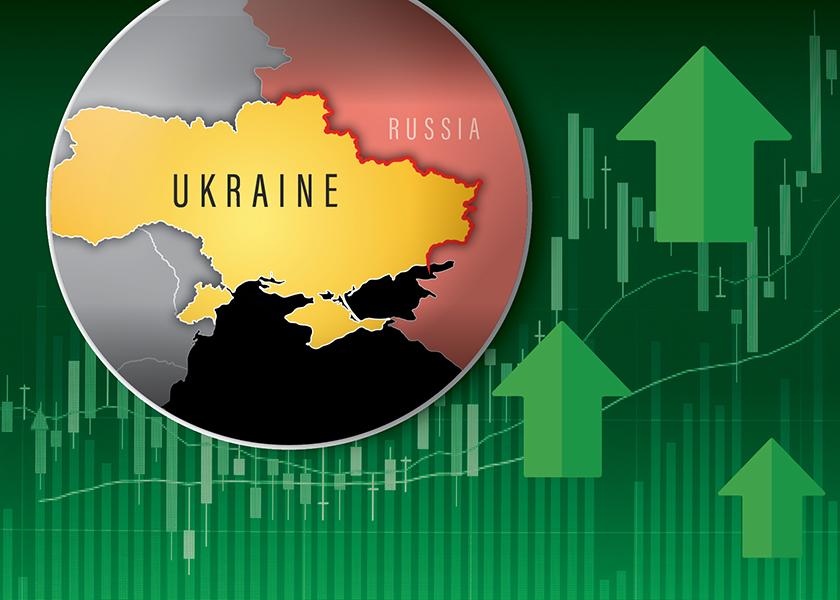One Year After Russia's Invasion of Ukraine: How Has World Trade Realigned?

A year ago, Russia’s initial invasion of Ukraine injected uncertainty about global grain supplies into the market. As questions swirled surrounding the amount of grain Ukraine would be able to produce and export last year, the invasion sparked a bullish run in grain prices with prices ultimately hitting a new record last year. Today, initial concerns about world grain supplies and exports have been squashed by the reality of record exports out of the Black Sea Region.
The initial invasion news one year ago quickly sent wheat prices skyrocketing 50 cents in one day, and corn prices shot up 30 cents after the initial news. Crude oil also hit the highest level since 2014, soaring above $100 per barrel.
At the time, Dan Basse of AgResource Company said the chaos and uncertainty between the two major grain producers would cause a “realignment of world trade,” especially considering the two countries accounted for:
- 31% of world wheat trade
- 30% of world barley trade
- 29% of sunflower oil trade
At the time, Basse cautioned there were still several questions after the initial invasion, including timeline and potential sanctions that could follow. A year later, the war is ongoing, yet exports from the region are not only holding strong, but hitting record levels.
“I don't think any of us would have imagined when the war started a year ago that we would have record wheat exports out of the Black Sea,” Basse says. “Now, principally, it's a lot of Russia exporting 45 million or 46 million tonnes. As an analyst, I would not have thought that part of the world would have record exports of grain and wheat in a time of war. Nonetheless, that's what's happened.”
Basse points out Russia produced a very large crop last year. He says you can argue whether it was 92 million or 102 million tonnes of wheat, but it doesn’t change the fact Russia is sitting on a big crop. Until Europe starts planting the new crop in May and the focus shifts the weather’s impact on that crop, the scenario of large wheat stocks won’t change.
“Here today, Russia is not missing a bit, and it's a problem because world milling prices is now trading over Gulf corn, so we're going to be losing some corn export demand just because of the cheapness of wheat,” says Basse.
Read More: Global Grain Shuffle: Is The End Of U.S. Grain Export Dominance Near?
Matt Bennett of AgMarket.net also points out the reality of the situation differs greatly from what many projected one year ago.
“I don't think it's been near the windfall of exports that we thought that it was going to be, there's no doubt Ukraine probably performed a little bit better than most expected, but at the same time moving forward, I'm not so sure that we can count on production out of that portion of the world to be able to satisfy some of the export demand that they've been able to serve us over the last several years,” says Bennett.
This week, USDA lowered its projection for exports during the Ag Outlook Forum, and Bennett says it’s proof that competition in grain production continues to grow.
“Out of South America, for instance, Brazil continues to grow in their dominance in my opinion, and I think that they're going to leave probably the U.S. in second place, not just this year, but moving forward--in corn and soybeans,” Bennett says. “Bottom line is I think you're looking at a heck of a lot of competition from that part of the world, especially with some of the currency situations that we've got to deal with.”
Related Stories:
The Global Grain Market--One Year After Russia's Invasion of Ukraine
Ukraine-Russia Tensions: What it Could Mean for Agriculture
Global Grain Shuffle: Is The End Of U.S. Grain Export Dominance Near?







